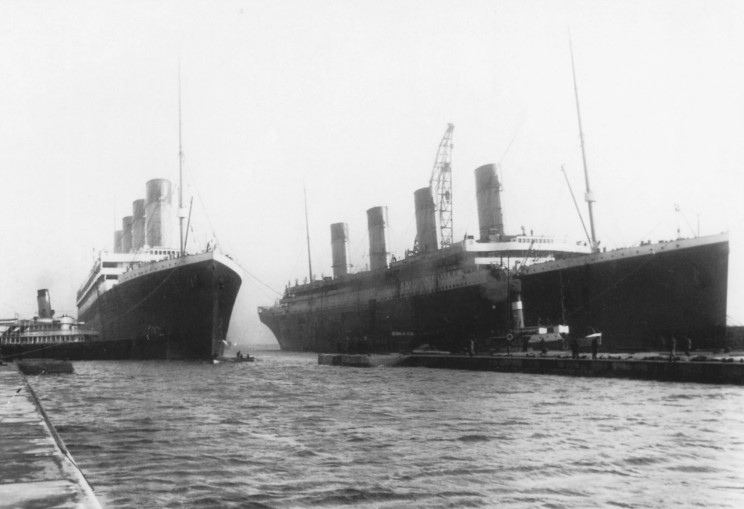- William Arrol
Sir William Arrol (1839–1913) was a Scottish
civil engineer ,bridge builder, and Liberal Party politician.The son of a spinner, he was born in Houston,
Renfrewshire , and started work in acotton mill at only 9 years of age. He started training as ablacksmith by age 13, and went on to learnmechanics andhydraulics at night school. In 1863 he joined a company of bridge manufacturers inGlasgow , but by 1872 had established his own business, the Dalmarnock Iron Works, in the east end of the city. In the late 1870s he went on to foundSir William Arrol & Co. , a leading internationalcivil engineering business.Tay bridge
In 1878, he secured the contract for the
Caledonian Railway Bridge over the Clyde, and In 1882 he was awarded the reconstruction contract for theTay Rail Bridge , which had collapsed in 1879. His company went on to construct the Forth Bridge which was completed in 1890. At the time, the Tay and Forth bridges were the largest of their type in the world. They were notable not just for their size but also the use ofsteel in the Forth bridge, and theriveting method developed by Arrol to attach the girders to one another.Forth bridge
The bridge is, even today, regarded as an
engineering marvel. It is 2.5 km (1.5 miles) in length, and the double track is elevated 46 m (approx. 150 ft) above high tide. It consists of two main spans of convert|1710|ft|m|abbr=on, two side spans of 675 ft, 15 approach spans of convert|168|ft|m|abbr=on, and five of convert|25|ft|m|abbr=on. Each main span comprises two convert|680|ft|m|abbr=oncantilever arms supporting a central convert|350|ft|m|abbr=on span girder bridge. The three great four-tower cantilever structures are 340 ft (104 m) tall, each convert|70|ft|m|abbr=on diameter foot resting on a separate foundation. The southern group of foundations had to be constructed as caissons under compressed air, to a depth of convert|90|ft|m|abbr=on. At its peak, approximately 4,600 workers were employed in its construction. Initially, it was recorded that 57 lives were lost; however, after extensive research by local historians, the figure has been revised upwards to 98.Both bridges are known for their high safety factors, a natural result of the under-design of the first Tay bridge by
William Bouch , and both bridges have recently (2008) been renovated.Other bridges
Other notable bridges followed, including:
Tower Bridge inLondon , completed in 1894. Construction started in 1886 and took eight years with five major contractors Sir John Jackson (foundations), Baron Armstrong (hydraulics),William Webster , Sir H.H. Bartlett, andSir William Arrol & Co. . It employed 432 construction workers. E W Crutwell was the resident engineer for the construction. Two massive piers, containing over 70,000 tons ofconcrete , were sunk into the river bed to support the construction. Over 11,000 tons ofsteel provided the framework for the towers and walkways. This was then clad in Cornishgranite andPortland stone , both to protect the underlying steelwork and to give the bridge a pleasing appearance.Arrol also built the
Nile Bridge inEgypt and theHawkesbury Bridge inAustralia .Titanic
thumb|left|March 6, 1912: "Titanic" (right) had to be moved out of the drydock so her sister "Olympic", which had lost apropeller, could have it replaced.His company,Sir William Arrol & Co. , was contracted byHarland and Wolff Shipyard,Belfast , to construct a large Gantry (known as the Arrol Gantry) for the construction of three new super-liners, one of which was called theTitanic . Like the ships themselves, thegantry crane was the one of largest built at the time, comparing withtransporter bridge s in length, height and capability.Career
Arrol was knighted in 1890, and elected as the Liberal
Member of Parliament (MP) for South Ayrshire at the 1895 general election, serving the constituency until 1906.He spent the latter years of his life on his estate at Seafield, nearAyr , where he died in 1913.His company,
Sir William Arrol & Co. , continued in business after his death until 1969 when it was acquired byClarke Chapman .References
* Peter R. Lewis, "Beautiful Railway Bridge of the Silvery Tay: Reinvestigating the Tay Bridge Disaster of 1879", Tempus, 2004, ISBN 0-7524-3160-9.
*Charles McKean "Battle for the North: The Tay and Forth bridges and the 19th century railway wars" Granta, 2006, ISBN 1-86207-852-1
* John Rapley, "Thomas Bouch : the builder of the Tay Bridge", Stroud : Tempus, 2006, ISBN 0-7524-3695-3
* PR Lewis, "Disaster on the Dee: Robert Stephenson's Nemesis of 1847", Tempus Publishing (2007) ISBN 978 0 7524 4266 2External links
* [http://www.level-two.co.uk/report.php?locname=titan Climbing the Greenock Titan crane]
* [http://www.geo.ed.ac.uk/scotgaz/people/famousfirst3.html William Arrol on The Gazeteer for Scotland]
*
*cite news
author=
title=Crane becomes visitor attraction
date=2007-07-27
work=BBC News
url=http://news.bbc.co.uk/1/hi/scotland/glasgow_and_west/6918446.stm
accessdate=2008-08-07
* [http://www.nzrcranes.org/manufact.html NZR Cranes Arrol gantry]
Wikimedia Foundation. 2010.

